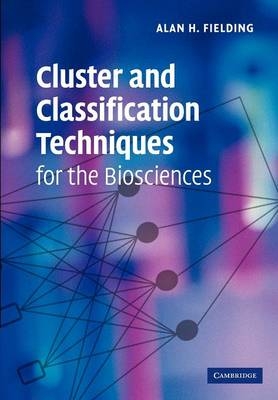
Cluster and Classification Techniques for the Biosciences
Seiten
2006
Cambridge University Press (Verlag)
978-0-521-61800-7 (ISBN)
Cambridge University Press (Verlag)
978-0-521-61800-7 (ISBN)
This 2006 book provides an overview of clustering and classification methods (from long-established statistical methods to more recent machine learning techniques), written specifically for bioscientists. Examples are taken from across the life sciences, including bioinformatics, and are used throughout to illustrate key concepts, and the potential of each technique discussed.
Advances in experimental methods have resulted in the generation of enormous volumes of data across the life sciences. Hence clustering and classification techniques that were once predominantly the domain of ecologists are now being used more widely. This 2006 book provides an overview of these important data analysis methods, from long-established statistical methods to more recent machine learning techniques. It aims to provide a framework that will enable the reader to recognise the assumptions and constraints that are implicit in all such techniques. Important generic issues are discussed first and then the major families of algorithms are described. Throughout the focus is on explanation and understanding and readers are directed to other resources that provide additional mathematical rigour when it is required. Examples taken from across the whole of biology, including bioinformatics, are provided throughout the book to illustrate the key concepts and each technique's potential.
Advances in experimental methods have resulted in the generation of enormous volumes of data across the life sciences. Hence clustering and classification techniques that were once predominantly the domain of ecologists are now being used more widely. This 2006 book provides an overview of these important data analysis methods, from long-established statistical methods to more recent machine learning techniques. It aims to provide a framework that will enable the reader to recognise the assumptions and constraints that are implicit in all such techniques. Important generic issues are discussed first and then the major families of algorithms are described. Throughout the focus is on explanation and understanding and readers are directed to other resources that provide additional mathematical rigour when it is required. Examples taken from across the whole of biology, including bioinformatics, are provided throughout the book to illustrate the key concepts and each technique's potential.
Alan H. Fielding is Senior Lecturer in the Division of Biology at Manchester Metropolitan University.
1. Introduction; 2. Exploratory data analysis; 3. Cluster analysis; 4. Introduction to classification; 5. Classification algorithms I; 6. Other classification methods; 7. Classification accuracy; Appendices; References.
| Erscheint lt. Verlag | 14.12.2006 |
|---|---|
| Zusatzinfo | 58 Tables, unspecified; 62 Line drawings, unspecified |
| Verlagsort | Cambridge |
| Sprache | englisch |
| Maße | 170 x 244 mm |
| Gewicht | 420 g |
| Themenwelt | Mathematik / Informatik ► Mathematik ► Angewandte Mathematik |
| Naturwissenschaften ► Biologie ► Allgemeines / Lexika | |
| ISBN-10 | 0-521-61800-2 / 0521618002 |
| ISBN-13 | 978-0-521-61800-7 / 9780521618007 |
| Zustand | Neuware |
| Haben Sie eine Frage zum Produkt? |
Mehr entdecken
aus dem Bereich
aus dem Bereich
Buch | Softcover (2024)
Springer Vieweg (Verlag)
44,99 €
Anwendungen und Theorie von Funktionen, Distributionen und Tensoren
Buch | Softcover (2023)
De Gruyter Oldenbourg (Verlag)
69,95 €


